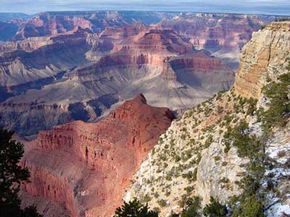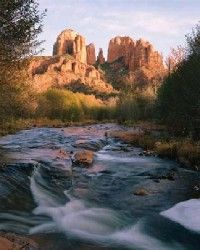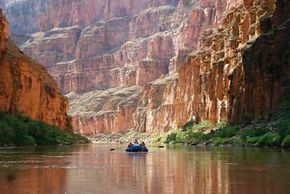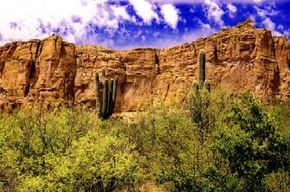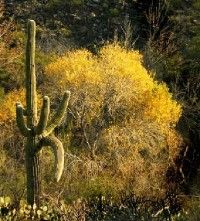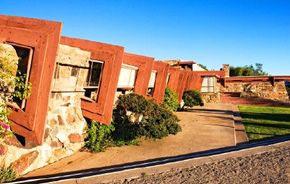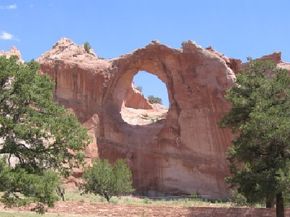Arizona is home to one of the Seven Wonders of the World, making it the state's number one tourist attraction, and one of the most popular attractions in the country. In Sedona, families can explore unusual desert landscapes, and in the Grand Canyon, outdoor adventurers can hike exciting canyon trails or take a rafting trip down crystal-clear -- but temperamental -- rivers.
The fun doesn’t stop at sightseeing, hiking or water rafting adventures. Arizona features scores of small towns and communities where the locals will always welcome you, and it is also home to one of the fastest growing cities in the country.
Advertisement
In the following articles, explore profiles of some of the state’s major attractions and activities with contact information to help you plan your trip. There are also photos of each destination:
The eerie red rock formations around Sedona resemble the desert landscape of an alien planet. The formations soar dramatically above the dry gulches and exotic saguaro cacti of the rugged terrain to the wonderment of every visitor.
At 227 miles long and 18 miles across at its widest point, this breathtaking abyss plunges more than a mile from rim to river bottom at its deepest point.
Canyon de Chelly National Monument
Canyon de Chelly blends archaeology, history and geography, and is home to the famous attraction Spider Rock.
Sabino Canyon is surprisingly green for a desert, and its hiking trail is one of the most beautiful in the United States.
Once the winter home of architect Frank Lloyd Wright, Taliesin West is a visionary architectural achievement. In the late 1930s, Wright designed and built the complex in Scottsdale, Arizona, as the winter counterpart to his original Taliesin in Spring Green, Wisconsin.
Window Rock is both a community and a geological masterstroke. It is the capital of the Navajo Nation, and it also a natural landmark -- the city has taken its name from the wondrous pothole arch.
Continue to the next page learn about family vacations in Sedona.
To learn more about family vacation destinations, see:
- Family Vacations: Learn about hundreds of family vacations in destinations all over North America.
- Phoenix City Guide: Find out where to stay, what to do, and where to eat when you visit the Valley of the Sun.
Advertisement
